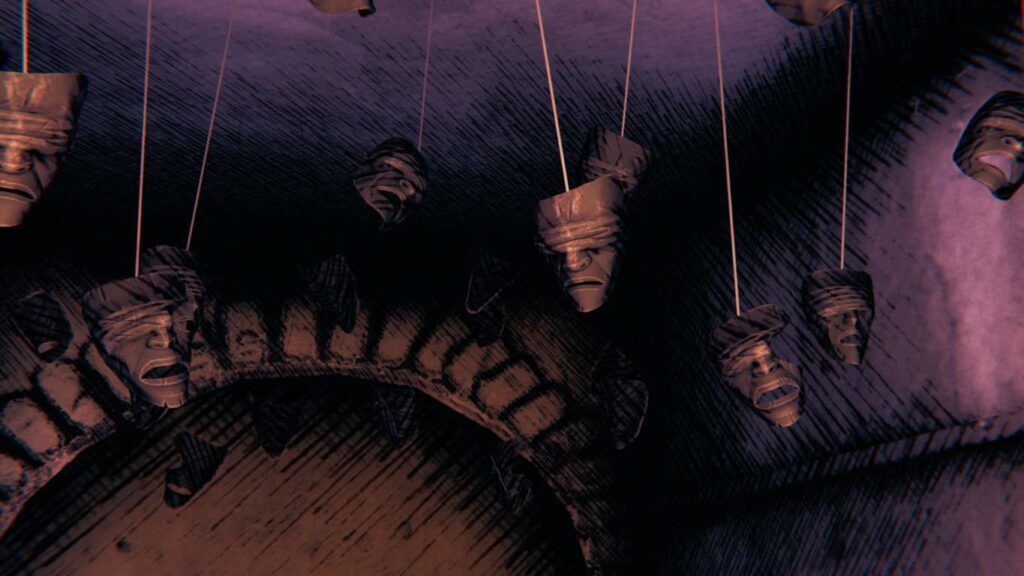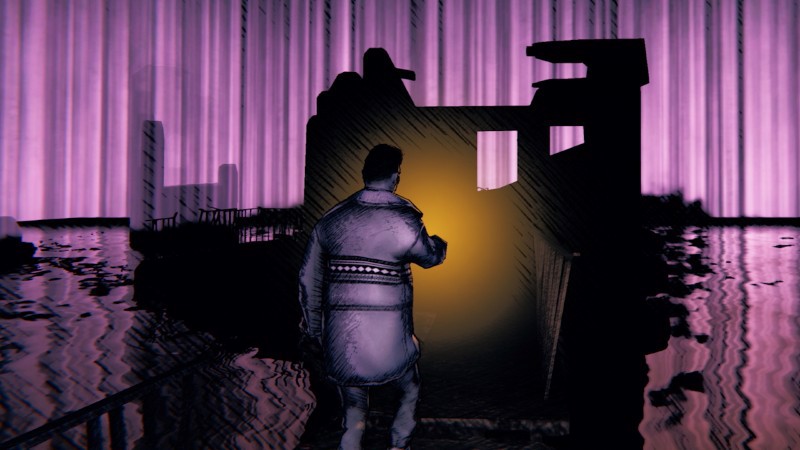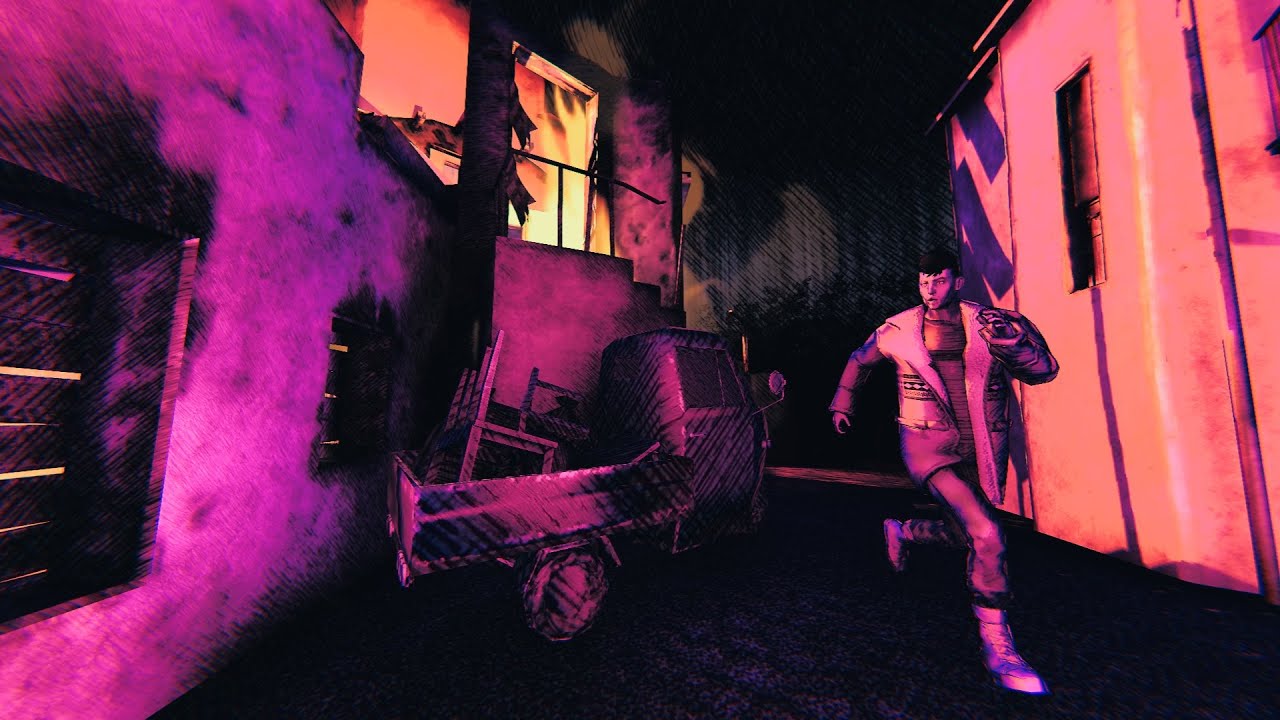That Italy is becoming an increasingly frequent location (also) for videogames, is only good. Enter a thriving and growing medium like the videogame one, it certainly has several benefits from its side, starting from the visibility offered to our country. In addition to films, therefore, and lately also in documentaries, our territory is increasingly becoming the protagonist of video games. In this regard, the new team with the evocative name Holy Reason transports us into a story that is linked with culture and mythology, contextualizing it in Sardinia. Saturnalia is the title entrusted to this project, of which we got our hands in preview on the PC version and we will tell you how the meeting between the videogame dimension and the historical one was. A gaming myth? Let’s find out together.
Saturnalia, between saints and false gods
We are at December 21, 1989 in the village of Gravoi, date not chosen randomly. The so-called Saturnals they lasted about seven days and, between banquets and exchanges of gifts, there was also the temporary overthrow of social hierarchies. It was a religious festival, which celebrated the arrival of winter and to celebrate the god Saturn, the bearer of abundance in crops. This deity was represented by a red mask during the festival, a symbol also taken up in Saturnalia. In the game, however, we are in Gavoi, a village that is so imaginary, but with real recognizable places. Among these, the Iglesias Museum of Mining Art, Su Nuraxi di Barumini, the Serravalle Castle, and others.
Alongside this careful reconstruction of the local setting and culture, not only in the graphics, but also in the soundtrack, we enter the history of Saturnalia, which narrates the events that take place in Gravoi. There feast of Saint Lucia is approaching and there will be a parade similar to the Barbagia carnival. The various narrative strands therefore begin to intersect: from a pregnant girl who wants to leave the village, to a young man with drug addiction problems and returning after years, or a journalist on the trail of the father figure and another girl in conflict. with his family.

Four different stories unfold, however, all linked by difficulties with their origins, which they seek or want to abandon. So why is it a horror? Soon said: what better occasion to start the plot, if not the party itself? On that very evening, they manifest themselves strange presences and sinister facts happen. To survive you just have to flee, or else stay stoically and try to put an end to an ancient ritual. In this perspective, we must also solve the mysteries surrounding the country and its inhabitants.
A malleable structure and a mix of genres
These are the first details that clarify why we are dealing with a third-person investigative survival horror. Here the main missions to be carried out are the solving puzzles and riddles in the country, in addition to avoiding being killed by the presences that populate it. However, there are other interesting elements that determine a mixture of genres …

The gameplay structure of Saturnalia is made in such a way as to subject us to a ‘sandbox adventure, where we can choose which characters to lead and which missions to complete. This happens thanks to a kind of spontaneous selection in the course of the game and the finding of documents and objects that unlock objectives linked to individual characters, or to the whole group. So the structure is free and there are no bonds of subordination to a specific order, if not some pre-established directive and, clearly, the ending, not being a branched narrative and with only two different endings foreseen.
The discoveries made from time to time are grouped into a sort of conceptual map to also visualize the links between the clues. Gravoi’s exploration also requires characters to remember the direction of the place they are heading to. There is also the classic antagonist stalker who has the sole objective of killing us and from which we can only escape. This is allowed for us as long as we have stamina, therefore we will have to hide or distract the being to get away with it. What if we don’t make it? Not a remote possibility, but don’t worry: a new vision of Gravoi is generated, and the game is restarted.
Historical and videogame quotes in an original graphic style
Saturnalia’s graphic style seemed rather original to us, with the application of the cross hatch in 3D graphics that offers an overall rendering similar to that of a comic. The graphic sector is made up of strong colors and purple spots that combine with white and black. Do not miss the dark, practically necessary element in a horror, which limits us a lot the view. In addition to this graphic solution, the narrative detail is also dictated by a series of quotations, both historical, such as the presence of Bettino Craxi on a poster hanging on a wall, both productive. In fact, the Santa Ragione team is self-referring by taking up a previous title, Photonicswriting its name on a disused cabinet.

From a purely technical point of view, however, we were convinced by the open structure of the game, the replayability of the matches and the poor repetition of the proposed game world. We also experienced one divergence in task difficulties to complete: if on the one hand escaping the creature is quite difficult, on the other hand finding information and discovering clues is very easy, almost elementary.
In the end we don’t necessarily have to finish the main goal of each protagonist, and we are not called to unlock them all. However, it is true that the persecution of their aims is linked to the unveiling of the mystery, which is rather predictable in its development.
The review of Saturnalia in a nutshell
For a little while longer, Saturnalia will be available for free on the Epic Store, so you can take advantage of this offer to enjoy it an original point of view on Sardinia and on cultural aspects specific. A further reason to give a chance to an all-Italian title that deserves to be tried, due to its open structure and history which, although not too long-lived, is however replayable several times. Some mechanics seem a bit sketchy from a technical point of view, but the overall context manages to distance itself from excessive territoriality of the origins of the team. A title therefore that joins an ever wider and more varied Italian production, and which at the same time brings out historical and cultural traits that would otherwise be easily forgotten and overshadowed.













Leave a Reply
View Comments